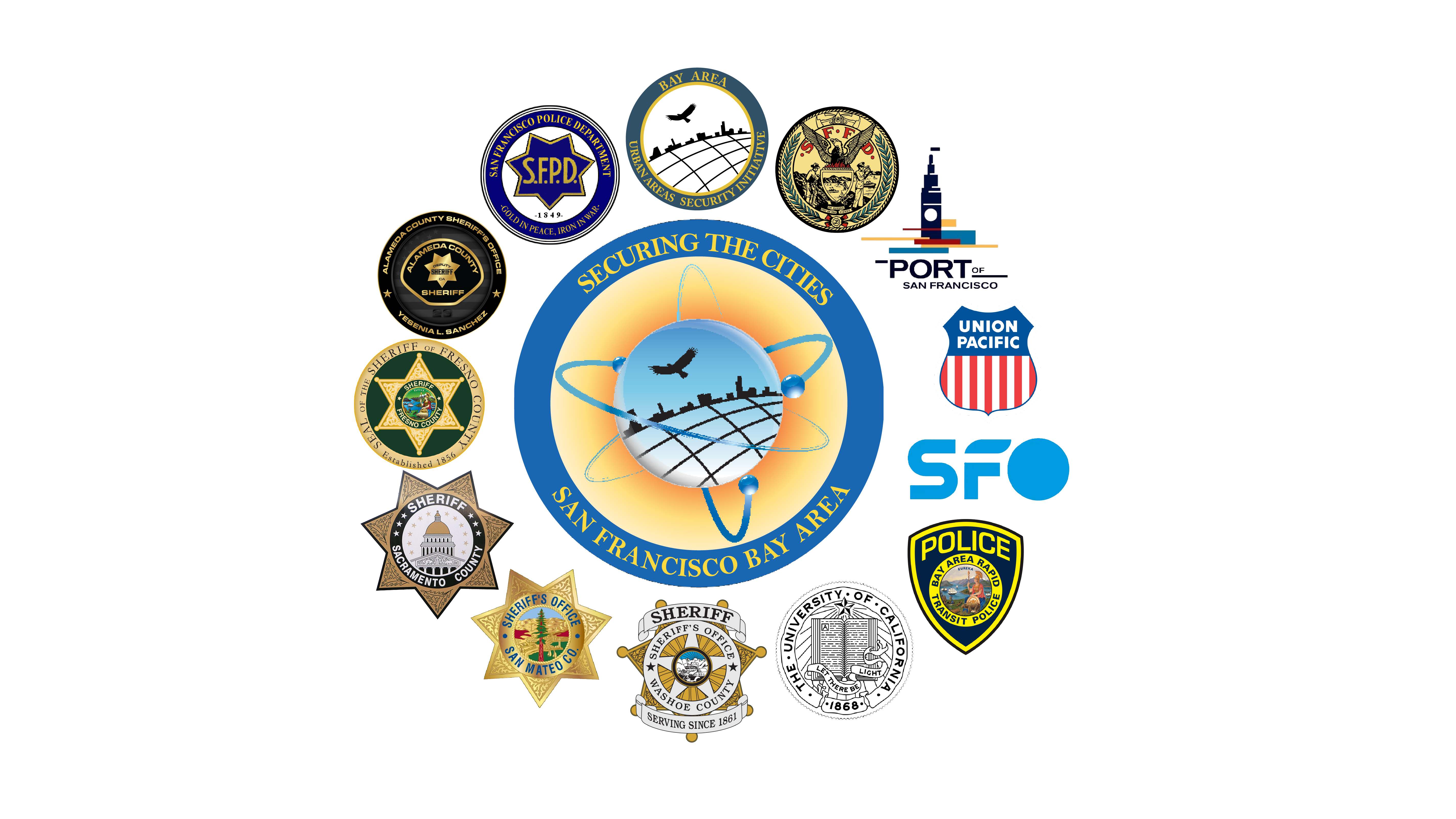The Bay Area Urban Areas Security Initiative

PURPOSE & OVERVIEW
The mission of the Securing the Cities (STC) San Francisco Bay Area (SFBA) Program is to protect its residents, visitors, economy, critical infrastructure, and natural resources against threats posed by the unauthorized use of radiological or nuclear (RN) materials. In support of this mission, the program provides detection equipment, training, exercise support, operational and technical subject matter expertise, and programmatic support to develop regionally coordinated RN detection capabilities.
The Bay Area Urban Areas Security Initiative (BAUASI) is comprised of twelve counties and three major cities (San Jose, San Francisco, and Oakland). In addition to the BAUASI’s area of responsibility, the STC SFBA also includes Sacramento County, Fresno County, Washoe County in Nevada, and pathways into these counties.
GOALS & OBJECTIVES
The goals and objectives are based on guidance from CWMD as well as the Bay Area’s experience in its own PRND program. These goals and objectives are influenced and informed by the Bay Area’s PRND Concept of Operations Plan, the Bay Area and Sacramento Area THIRA/SPR, NCRIC’s threat assessment, DHS risk-based methodology, and best practices from across the nation.
Goals
Objectives
PRINCIPAL PARTNERS
Principal Partners for the STC San Francisco Bay Area Program include:
Non-voting members:
Participation in the STC San Francisco Bay Area Program is not limited to Principal Partner agencies. If you’re a public safety agency interested in the program, please contact Bay Area UASI or one of the Principal Partner agencies near you.
WORKING GROUP & SUBCOMMITTEES
The STC Work Group and its subcommittees leverage the STC SFBA and BAUASI program in CBRNE prevention, detection, incident response and recovery to benefit the region where appropriate. All stakeholders are encouraged to participate in each of the following subcommittees:
STC Work Group (chairpersons of subcommittees), Chemical-Biological, Radiological-Nuclear, High-Yield Explosives, Equipment, Information Sharing, Training & Exercise
TRAINING OPPORTUNITIES
The STC SFBA offers CTOS Center for Radiological/Nuclear Training courses on the detection, alarm assessment, locating and mitigation of an event involving radiological/nuclear materials. These include but are not limited to
1) Primary Screener/Personal Radiation Detector (PER-243),
2) PRND Backpack Operations
for the Primary Screener (PER-246),
3) PRND Secondary Screener/Radio-Isotope Identification Device (PER-245),
and
4) Radiation Instruments Employment (PER-355) in a four-day training program.
CTOS training opportunities can be scheduled at your facility. Please reach out to the Program Manager to inquire about upcoming courses or to request a course.
Local government agencies are also eligible to be reimbursed for overtime or backfill cost associated with STC SFBA training!
Overtime & Backfill Reimbursement Form (PDF)
Completed forms are to be submitted to STC SFBA Program Management, matthew.devine@sfgov.org or leo.samuelson@sfgov.org.
Upon course completion, a copy of the approved form is required to be submitted with invoice for reimbursement. Reimbursement is handled at an organizational level between financial staff preferably invoices will include batches of students, not individuals.
EQUIPMENT
The STC SFBA can provide the following equipment to public safety agencies within our area of responsibility which includes the twelve Bay Area UASI counties, Sacramento County, Fresno County, Washoe County in Nevada, and pathways connecting these counties. To receive equipment the Bay Area UASI requires the completion of a Property Transfer Form that would be sent through DocuSign once we discuss needs and collect agency information.
Personal Radiation Detector STE TA600
Radionuclide
Identification Device FLIR identiFINDER R400
Radiation Detection Backpack
STE RadPack Max
Mobile Radiation Detection Systems (Vehicle & Marine)